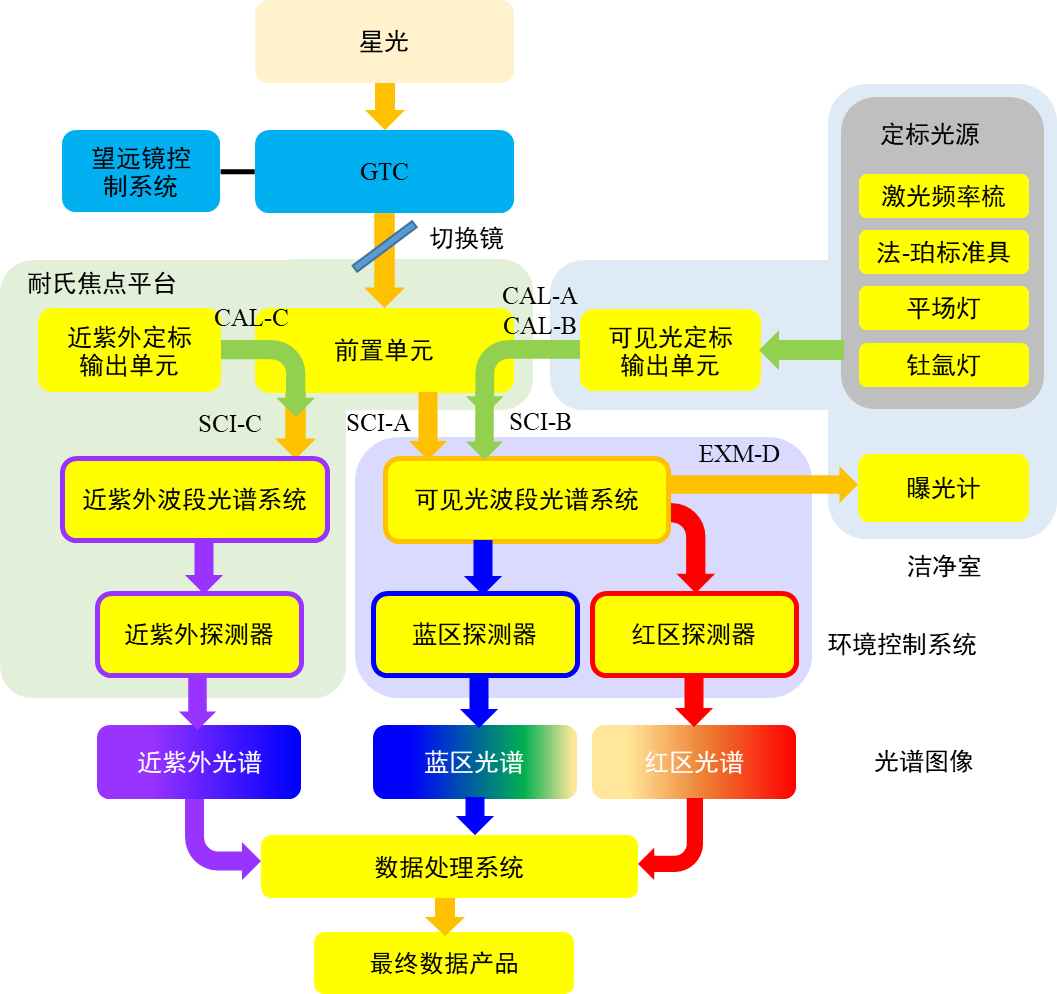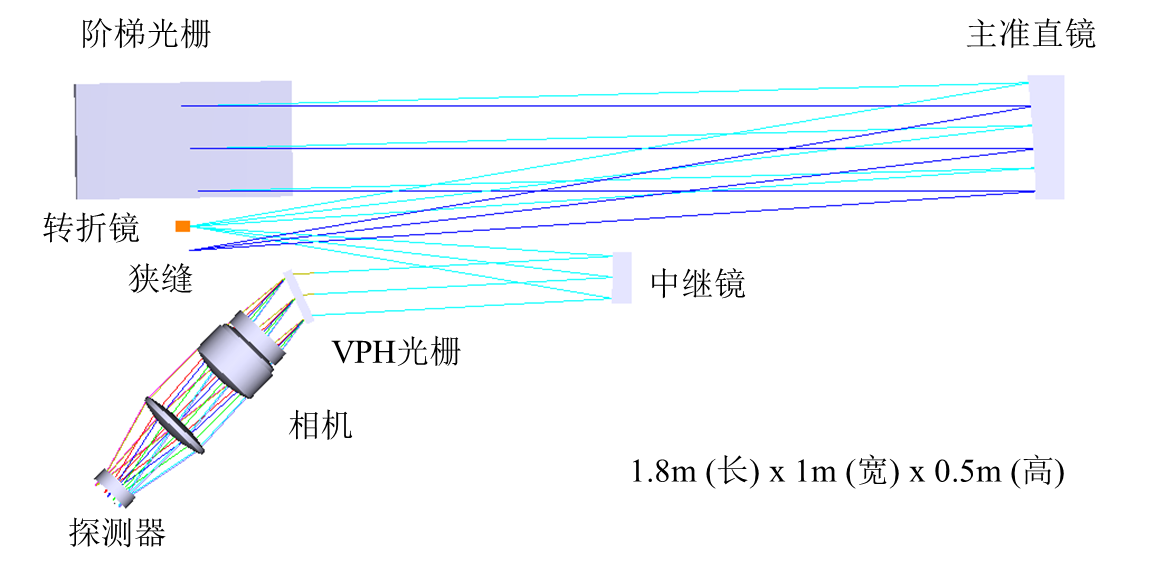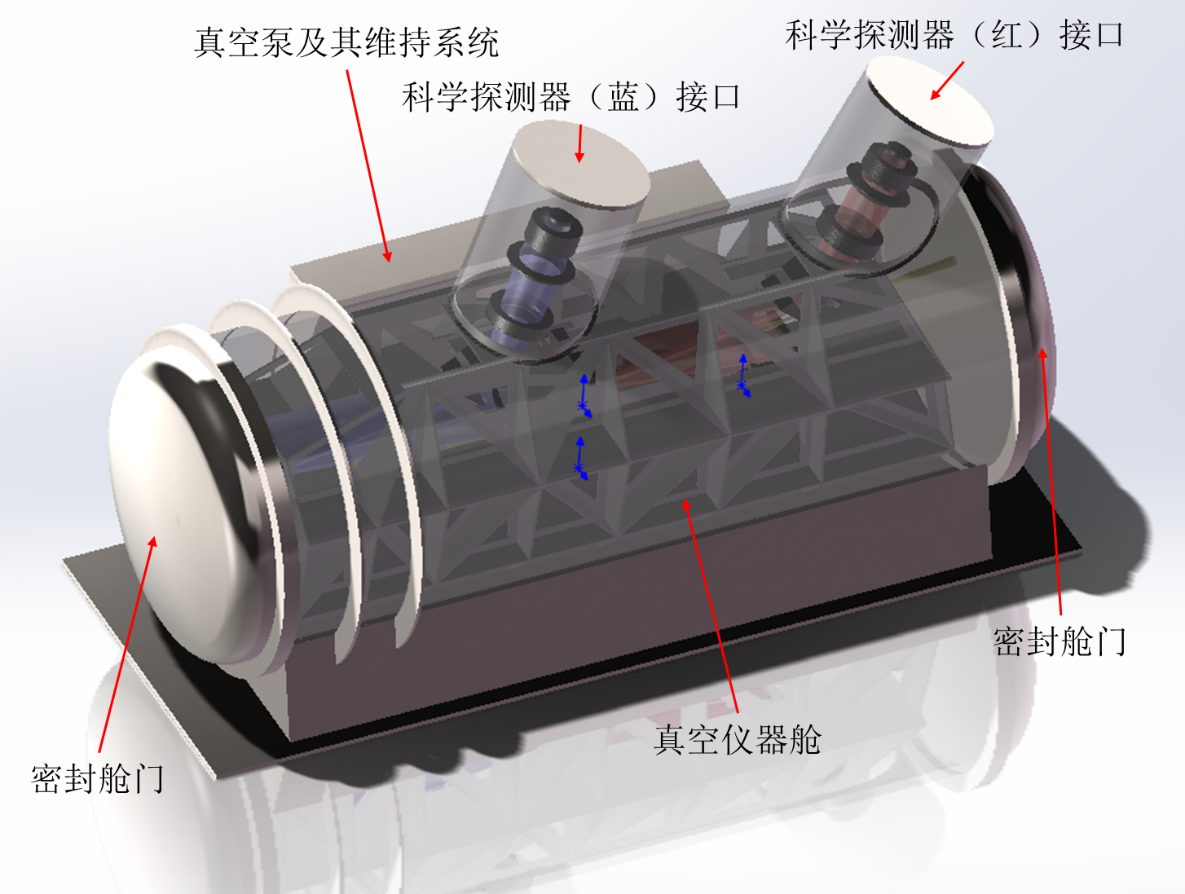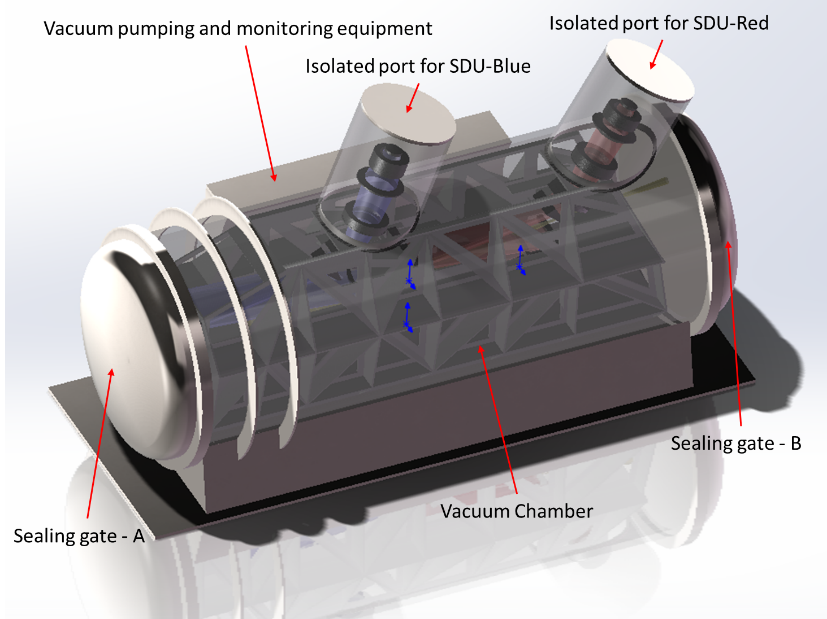GTC高分辨率超稳定光谱仪由八个分系统组成,包括光纤连接系统、近紫外波段光谱系统(UVS)、可见光波段光谱系统(VIS)、环境控制系统、定标系统、曝光计、仪器操控系统、数据处理系统。
星光通过望远镜的耐氏焦点接入光谱仪,在前置单元处分光进入两个平行的光谱分系统(UVS和VIS)。近紫外和可见光波段系统通过各自独立的光学系统进行摄谱和波长定标。最后,光谱仪提供三幅光谱图像来覆盖从310纳米到780纳米的连续波段(图1)。

近紫外波段光谱系统(UVS)将放置在耐氏焦点平台以便降低长距离光纤传输中近紫外波段的光能损耗。这台分系统主要用于测量化学元素丰度和监测恒星色球活动性(图2)。

可见光波段光谱系统(VIS)主要专注于高精度的视向速度测量,兼顾其它多样化的科学研究。为此,它将被密封在库徳实验室内的一个超稳定真空环境中,以便减少光机系统微变化引起的视向速度测量误差。定标系统将提供包括激光频率梳在内的多样定标光源,用于波长定标和监测仪器漂移。(图3)。

GTC high-resolution ultra-stable spectrograph is composed of eight subsystems, including fiber link subsystem, near-UV band spectrograph (UVS), visible band spectrograph (VIS), environment control subsystem, calibration subsystem, exposure meter, operation and control subsystem, and data flow subsystem.
The celestial light travels to the spectrograph through the telescope’s Nasmyth focus. It is separated into two spectroscopic subsystems (UVS and VIS) in parallel at the front-end unit. The UVS and VIS subsystems obtain and calibrate spectra independently. The whole spectrograph provides three spectra covering the continuous wavelength range from 310 nm to 780 nm (see Figure 1).

The UVS subsystem locates at the Nasmyth platform to minimize the light loss by long-distance fiber transmission in the near-UV band. It aims to determine the chemical abundances and monitor the chromospheric activities of the stars.

The VIS subsystem will mainly focus on the PRV measurements with consideration of the other diverse science cases. To achieve this aim, it is fully enclosed in an ultra-stable vacuum environment at the Coudé room to reduce the RV errors caused by tiny variations of the optomechanical system. The calibration subsystem provides diverse light sources, including the laser frequency comb, to conduct the wavelength calibration and monitor the instrument drift.

光谱仪 | GTC CHORUS